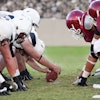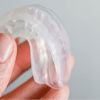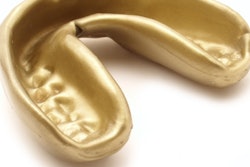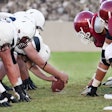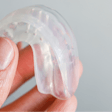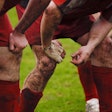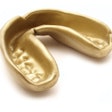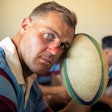More than 30% of athletes may be affected by teeth grinding, which appears to be significantly higher than the global rate, according to a new study published on June 2 in the Journal of Oral Rehabilitation.
Furthermore, professional or high-performance athletes potentially face the greatest risk, the authors wrote.
“The overall prevalence of bruxism among athletes was 34%,” wrote the authors, led by Alka Daby Nascimento de Sales of the University of Pernambuco in Brazil.
To explore the link between bruxism and athletics, researchers searched 10 databases and gray literature. They included observational studies that reported on the prevalence of possible, probable, or definite sleep and/or awake bruxism in both athletes and para-athletes from competitive categories. A total of 23 studies were included in the review, most of which were cross-sectional, they wrote.
The number of athletes in these studies ranged from 20 to 370, with males making up the majority. Most of the research examined bruxism in general without distinguishing between awake and sleep forms. All included studies assessed bruxism using noninstrumental methods like questionnaires and clinical evaluations.
The overall prevalence was calculated using data from 2,805 athletes, with a pooled bruxism rate of 34% (95% confidence interval [CI], 0.27 to 0.47; p < 0.001), which is higher than the global prevalence of 22.22% (95% CI, 19.55 to 25.11). Para-athletes showed a slightly lower prevalence at 27% (95% CI, 19 to 38). Among elite or high-performance athletes, bruxism rates were even higher, possibly due to greater stress and performance demands, they wrote.
For instance, a study in Spain found a 59.8% prevalence in high-performance team sport athletes, and another reported 67.6% in individual sports and 59.8% in team sports. Other studies in Brazil found rates of 29.4% in American football, 33.3% among adolescent basketball and handball players, and the same rate in semiprofessional rugby players.
However, the study had limitations. There was significant variation in the tools used to assess bruxism, which may have affected the rates of prevalence, the authors added.
“Bruxism is a behaviour that can be associated with negative health consequences, which may be exacerbated in athletes due to their exposure to anxiety situations during pre-competition and competition periods,” they wrote.

